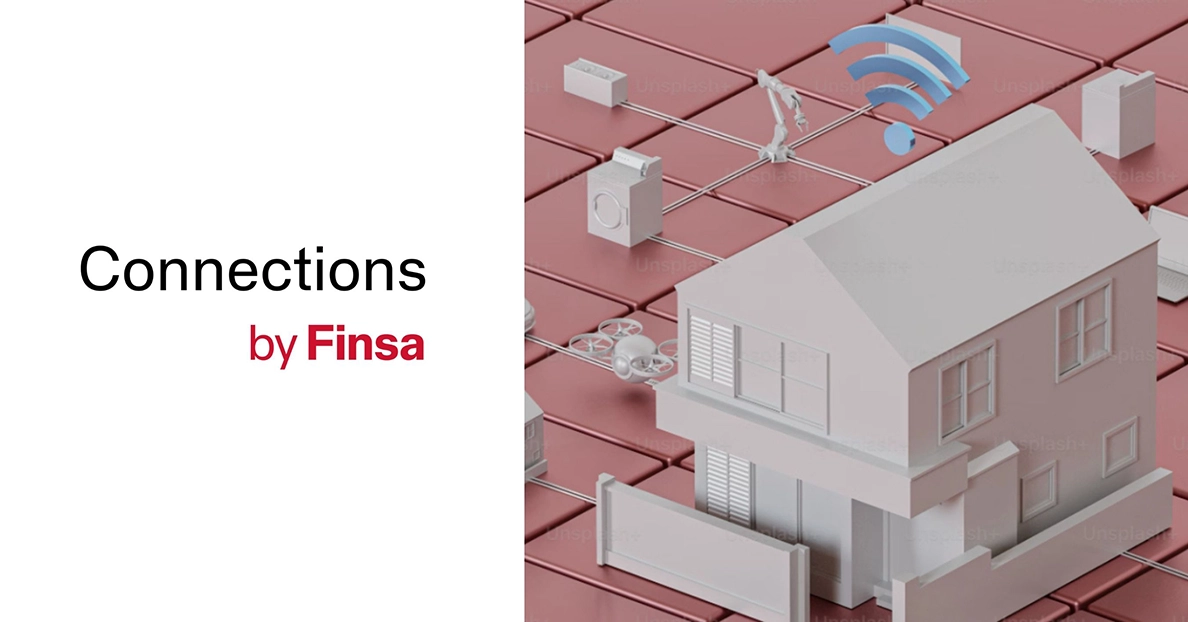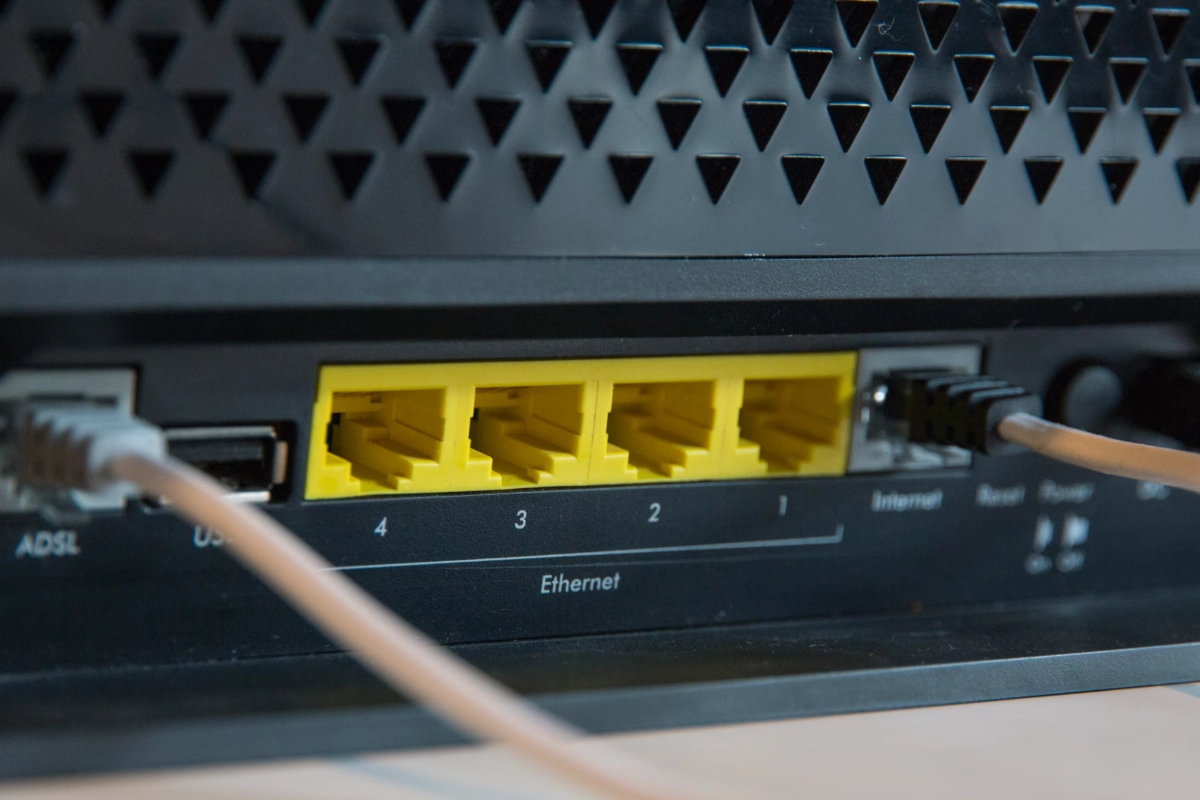What does it mean to inhabit a healthy space? This may be a question that, formulated in one way or another, people have asked themselves since we began to live a sedentary life. Its importance, in fact, is seen if we compare it with its negative version: Who would want to live in an unhealthy space?
Living in a healthy space involves much more than avoiding pollutants and toxins or having an adequate level of comfort. In a connected world, home design must increasingly respond to people’s new physical, emotional and social needs. This covers aspects such as air quality, lighting, acoustics and ergonomics, but also control of the new technological environment we have created around us.
Nowadays, we know that a home is better if it is made from natural and safe materials, but… Is a house with dozens of connections and screens emitting blue light healthy? This is where concepts such as electroclimate, biohabitability or biophilic design come into play, which we explore below.

Electroclimate: how to avoid the alteration of biological processes
Electroclimate refers to the electromagnetic environment generated by devices and communication systems in our homes. It is an aspect that is increasingly considered when tackling a project from the construction stage. The Centre for Biomedical Technology (CTB) warns in a report prepared for the General Council of Technical Architecture of Spain that “prolonged exposure to electromagnetic fields could interfere with biological processes, affecting the balance of the cellular systems of the people who live there”.
To respect these processes, biohabitability is put into practice, the capacity of a space to guarantee the integral well-being of its inhabitants by minimizing exposure to toxic substances, controlling humidity and temperature levels, and ensuring that the materials used are healthy and sustainable. This involves minimising exposure to these toxic substances, controlling humidity and temperature levels, and ensuring that the materials used are healthy and sustainable.
One of the proposals that we can activate through interior design is biophilic design. Architect Anna Ferrer explains that “it helps reconnect people with nature through elements such as natural light, vegetation and organic materials”, thereby reducing stress and increasing well-being and productivity. A prominent example of this approach is the Bosco Verticale in Milan, a project that incorporates vertical gardens to purify the air and provide a visually pleasing environment, demonstrating that architecture can balance functionality, aesthetics and health. Furthermore, initiatives such as therapeutic gardens in hospitals have shown that the presence of nature in closed environments can reduce recovery times in patients, highlighting the direct impact of biophilia on health.
And yes, I’m sure you think that all this is very good… But how can you apply it in your next works? Here we bring several good practices for this.
Human-centred lighting to minimise electroclimate
Lighting is more than just an aesthetic aspect; it is essential for our health and well-being. The Human-Centred Lighting (HCL) approach seeks to optimize light to synchronize our biological rhythms and improve our quality of life. And this is something we can put into practice by questioning the lights we use, their intensity and how they are configured in the space.
HCL replicates the properties of natural light by adjusting its intensity, colour and duration according to our biological needs. For example, in the morning, a light that mimics the sunrise can improve our alertness, while a dim light at night encourages the production of melatonin for better rest.
LED technology has facilitated the implementation of HCL as it allows for precise control of light properties. In modern offices and homes, smart lighting systems can be programmed to change colour and brightness throughout the day, adapting to the activities and needs of users.
The benefits of HCL are several:
- Better sleep quality: Regulates the circadian cycle for deeper rest.
- Increased productivity: Intense light with blue tones increases focus and performance.
- Positive Impact on mental health: Adequate lighting can reduce symptoms of depression and anxiety.
- Support eye health: Well-designed lighting reduces eye strain, especially during long workspaces.
Smart systems that adjust lighting based on the time of day are already being implemented in offices and homes, showing how technology can replicate sunlight to improve our wellbeing.
An example of this application can be found in hospitals in Sweden, where the use of HCL in patient rooms has reduced length of stay and improved the overall user experience.
Indoor climate control: an invisible ally of health
When we talk about air conditioning we usually think about temperature, but there is much more to it than that. Indoor air quality directly affects our health. Inadequate ventilation can increase carbon dioxide (CO₂) levels, which impairs the well-being of occupants.
If you want to control these aspects in your home or in your next project, you will need little more than a thermometer with a humidity meter to know if you live in optimal conditions.
These are the recommended values for an average home:
- Humidity: Keeping it between 40% and 60% helps prevent respiratory problems and the appearance of mould.
- Temperature : According to RITE, the ideal temperature is 21–23 °C in winter and 23–25 °C in summer.
- Ventilation: Ideally, you should ventilate the house at least once a day for at least 10 minutes. If you want to go even further, mechanical systems with heat recovery ensure a constant flow of fresh air.
Passivhaus philosophy, which combines advanced insulation and efficient ventilation systems, facilitates a healthy indoor climate while reducing energy consumption. This type of construction has expanded globally due to its adaptability, especially in extreme climates, where interior conditions can make the difference between comfort and discomfort.
Advances in air quality sensors also allow for constant monitoring of CO₂, temperature and humidity levels. Devices such as smart CO₂ meters are becoming more accessible for homes and offices, helping users maintain healthy environments.

Controlling the electromagnetic environment: technology and its invisible impact on the habitat
The electroclimate has a significant impact on our health. Some strategies you can follow to reduce its impact are:
- Prioritize wired systems instead of Wi-Fi, especially in rest areas.
- Locate electronic devices away from areas of constant use, such as bedrooms.
- Use shielding materials and paints in building structures to minimize radiation.
- Install timers to turn off devices that emit unnecessary radiation at night.
Taking a precautionary approach when designing spaces could be key to mitigating the risks associated with increasing exposure to electromagnetic fields. In addition, some countries are beginning to regulate the use of wireless devices in schools and nurseries, thus highlighting the importance of protecting the most vulnerable populations.
Teleworking and ergonomics: designing for productivity
Teleworking has become an integral part of many people’s lives, and space design cannot ignore it, as it is essential to maintaining health and efficiency.
Follow these tips to design a teleworking space that minimizes the electroclimate:
- Ergonomics: Adjustable chairs and desks at the correct height reduce the risk of muscle pain.
- Acoustics: Reducing ambient noise helps concentration.
- Adequate lighting: Prevents eye fatigue and improves mood.
The use of standing desks that allow alternating positions is a growing trend that encourages mobility and improves circulation. Additionally, integrating green spaces into home offices can alleviate mental fatigue and foster creativity, according to recent studies on biophilia in work environments.
The home of today will be healthy or it will not be.
As you can see, technology and architectural design offer enough tools to transform our homes into spaces that promote health and well-being. From biohabitability to human-centric lighting to electroclimate control, every design decision can make a difference to our quality of life.
Adopting these practices not only benefits people, but also positions professionals in the sector who master them as leaders in the creation of innovative and healthy spaces. Designing with this comprehensive approach that combines technology, sustainability and well-being is the challenge and opportunity of the future.



